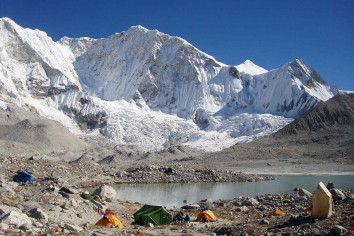Pumori Expedition - Trip Highlights
- Technical mountains among all 7,000 metres peak and is the ideal peak for aspiring 8,000-metre peak climbers.
- Spellbinding view of Everest and Lhotse from close prospect, near 6 km distance.
- Awe-inspiring sightseeing of Nuptse, Makalu, Cho Oyu, Ama Dablam, and other mountains in Khumbu.
- Expedition package designed with proper acclimatisation and preparations for climbers.
- 100% guaranteed summit with experienced mountain guides and Sherpa.
- Eco-friendly expedition to the Himalayas with an aim of cleaning and minimising solid waste.
- Trekking on a legendary Everest Base Camp Trekking route till Lobuche.
- Customizable with further extension to Everest Base Camp Trek after a successful summit.
- Exquisite experience of outdoor camping on the base of the Himalayas.
Pumori Expedition - Trip Overview
The home to mountains, Khumbu, holds four of fourteen world's highest peaks. Besides, there are many 6,000 metres and 7,000 metres peaks in the Everest region. One of them, the technically demanding mountain, Pumori, rises to 7,161 metres. At only 6 km away from Everest, its distinctive pyramidal shape is utterly visible from Kala Patthar.
English mountaineer and alpinist George Mallory, who led the first Everest expedition, got an early impression of a mountain. A peak close to Everest and Lhotse, like Everest, he named the peak "Pumori". The Sherpa meaning of this mountain is "Unmarried Daughter. He may have used this peak for acclimatisation and practice climbs. The same trend followed for many decades. Now, people who look up to scale 8,000-metre peak climb Pumori to excel in climbing skills.
What makes Pumori's best 7,000 metres peak? Well, the Pumori Peak summit is the last point, from where you can see the utmost elegance of Everest and Lhotse. North of Pumori summit lies Tibet and the Rongbuk glacier, the inspiring landscape of the Himalayas. On top, Makalu, Lhotse, Nuptse, and other peaks are visible from the summit of Pumori. The 17 days long climbing period not only lets you learn countless mountaineering techniques, but you'll master them. On top, the rewarding summit climb and successful completion of this trip make you the best fit for the 8,000 metres journey.
Pumori Expedition - Route to Summit
The preferred route to reach the summit of Pumori is the southeast face. Some climbers often seek thrill by attempting the climb from the western flank. Crossing glacial blue ice walls of nearly a 1 km length is a must for climbers when attempting the summit climb from any side. Often, the vertical steepness rises to 70 degrees at some ridges. Till today, around 600 people reached the summit successfully.
Pumori Base Camp sits at 5,300 metres, just above the Kala Patthar. Our climb route follows the South East Ridge, where there'll be three Camps, Camp I at 5,700 metres, Camp II at 6,200 metres, and Camp III at 6,480 metres. The route from Pumori Base Camp to Camp I is a glacial route, and that to Camp II is deep snow-filled terrain. Climbing Camp III in icy walls will be arduous. Thus, a precise fixed line climbing skill comes in handy during the climb. The route to the summit comprises crevasses and blue ice walls. So, Pumori at 7,161 metres is technically demanding.
Pumori Expedition - Itinerary Overview
Pumori expedition is to the Everest region, where you'll trek on the Everest trekking trail for days.
To kick off a month-long Pumori Expedition, we'll take a flight from Kathmandu to Lukla and trek to Phakding overnight. The route from Lukla to Phakding is rich in villages, towering hills, and lush vegetation on either side of the Dudh Koshi river.
We'll hike to Namche Bazar from Phakding. The true beauty of Khumbu starts unfolding as we reach Monjo. The glimpses of Khumbila and Themsekru appear from Monjo. We'll continue our hike to Namche Bazar by crossing several suspension bridges, including Hilary Bridge.
We'll acclimatise at Namche Bazar for a day before leaving for Tengboche. We'll hike to Hotel Everest View for mountain sightseeing like Everest, Nuptse, Ama Dablam, etc.
We'll further trek to Tengboche, Pheriche, Lobuche, Kala Patthar, and Pumori Base Camp with a day of acclimatisation at Dingboche.
We'll have 15 or more days during the climbing period at Pumori Base Camp. We'll practice routine climbs for proper acclimatisation and practice sessions. We'll wait for stable weather and have a puja ceremony before heading for the summit push. With a successful Pumori summit push with our Sherpa guides, we'll leave for Namche Bazar, retracing the Everet trekking trail.
The afterparty at Kathmandu marks the end of the successful Pumori Peak expedition.
Pumori Expedition- Clean Environment Practice
We at World Expedition Nepal believe in keeping mountains and the environment clean. We promote a clean campaign at every expedition. Thus, we run an eco-friendly Pumori expedition where we try to minimise solid waste. Also, we have policies to clean the base camp and leave nothing but a footprint on the mountains. We believe our valued clients also support us in this initiative. Successful Pumori summit and cleaning the base camp afterward is our main motto.
Why World Expedition Nepal for Gangapurna Expedition?
World Expedition Nepal focuses on and promotes peak climbing and expeditions in Nepal. We have been providing tour services since 2017 by registered and licensed under Nepal Government. In the Everest region, we'll make sure that you'll have complete joy alongside the adventure of high-altitude climbing.
Our professional and experienced guides will ensure your utmost comfort and safety on Pumori Peak climbing. We'll make this tour an unforgettable experience for you. Also, the health and safety of our clients is our primary motto. Our guides for these expeditions have mountain skills certification. They come with expertise in mountain medicine, first aid, and rescue operations.
We have fixed departures for the Pumori expedition for Autumn 2022 and Spring 2023. Book your trip with us and experience the thrill of climbing this 7,000 metres peak.
Pumori Expedition- Foods and Accommodation
We at World Expedition Nepal manage logistics for camping-style accommodation at Pumori base camps.
We'll accommodate tea houses until Lobuche. The tea houses on the Everest trekking route provide good meals and proper accommodations. You can also get hot showers at these lodges with attached washrooms. During peak expedition season, you have to accommodate on a twin-sharing basis.
While camping, our Sherpa team will manage the logistics from meals to overnight sleep. You'll get nutritious foods and warm sleeping bags. We'll guarantee that you'll get a proper meal and rest throughout the expedition.

 Recommended On
Recommended On
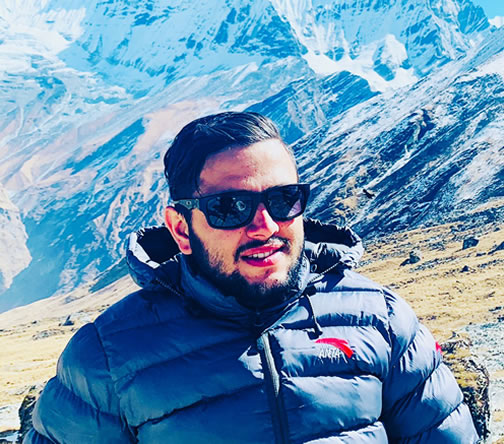




 7000m Peak Climbing , Nepal
7000m Peak Climbing , Nepal  26 Days
26 Days  US$9500
US$9500

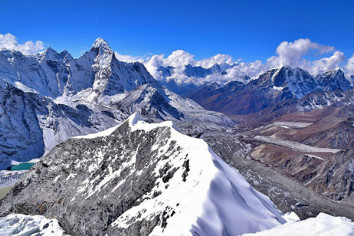
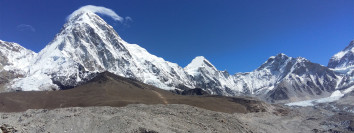


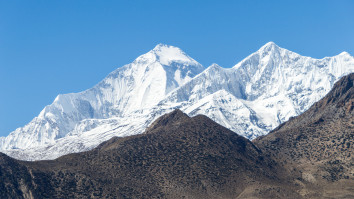
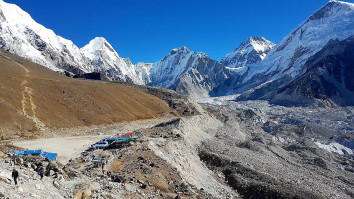
.jpg)
